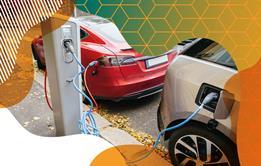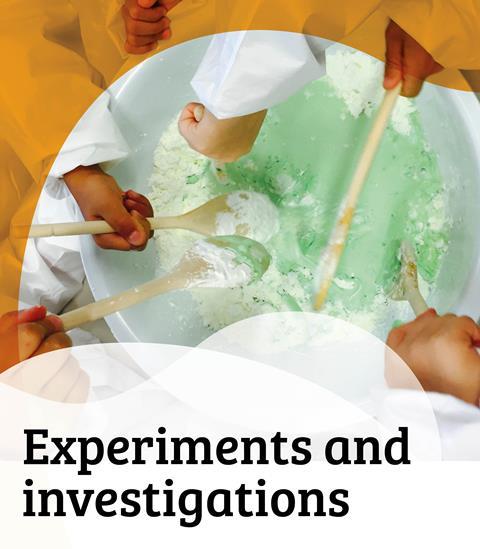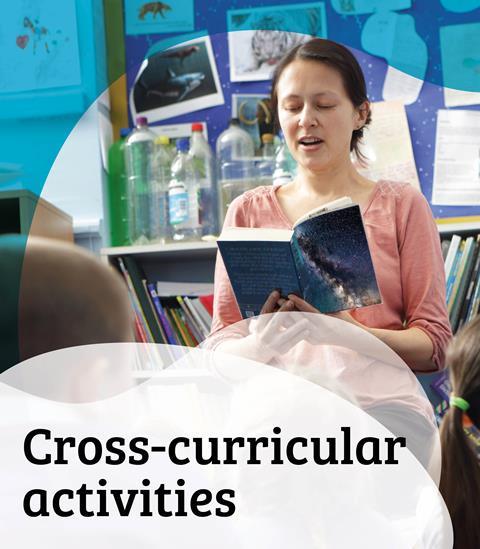Use pollution in the water cycle and how we can use less water as contexts for teaching about seasonal changes
This resource is also available in Welsh and Irish
Get the Welsh language version.
Get the Irish language version.
How does pollution affect people’s access to clean water? How much water do we use each day and can we reduce this? This topic web contains sustainability context ideas and classroom activity suggestions for teaching about water and the water cycle to 7–9 year olds. Estimate your water usage, or explore pollution in the water cycle and how you can clean dirty water.
Each web explains the background science, describes how scientists are working in this field, and suggests ways to explore this in the classroom.
How to use this topic web
This resource is part of our Sustainability contexts for primary science teaching series. The series features a total of 20 topic webs designed to help you link your existing curriculum teaching to sustainability issues.
Find out more about how to use this topic web in your teaching.
-

Download this resource
Get both topic webs on saving water and pollution in the water cycle for 7–9 years, with tips and suggested activities to use in the classroom.
Topic web 1: How the water cycle is affected by pollution
What’s the science?
There are many things that affect the water cycle and human access to clean water. One of these is pollution. Although water covers 70% of the Earth, only 3% of the world’s water is fresh water and less than 1% of this is ready for human use. There are many pollutants that can affect water quality including agriculture run-off, storm run-off and vehicle emissions. Billions of people still lack access to clean water.
What are scientists doing about it?
Scientists are able to monitor the levels of organic materials in drinking and waste water to ensure the water in our taps is safe to drink. NASA engineers have developed a purification system that recycles air and water aboard the space station. This advanced technology has also been used in at-risk countries to improve access to clean water.
How could you explore this in the classroom?
- Learners could develop their secondary research skills by finding out about water pollution and filtration, as well as learning about access to water in different countries.
- Learners could leave containers outside in different areas to collect rainwater over a week or month. They could observe what collects in the different containers and compare these to clean water.
- Learners could then use this water or a mixture containing different materials such as sand and soil to investigate how they could separate the materials to ‘clean’ the water. Provide them with a range of equipment such as sieves, filter paper, funnels etc and set them the challenge of ‘cleaning’ the water.
- Literacy skills include writing about the process of separating the mixture. Learners could create a persuasive poster to educate others about those lacking access to clean drinking water. Cross-curricular links to PSHE include learning about the work of charities such as Water Aid.
- Useful books are ‘The Drop in my Drink’ by Meredith Hooper and ‘The Rhythm of the Rain’ by Grahame Baker-Smith. Learners could create comics to show the journey of water including where pollutants can be added.
Curriculum links
Research and observation; literacy; states of matter; water cycle; separating substances; habitats; Earth and space; PHSE.
Topic web 2: How we can save water
What’s the science?
On average, each person uses approximately 140 litres of water per day in the UK. However, there are still billions of people across the world who lack access to clean water. Climate change is leading to more floods and droughts across the world. By 2025, two-thirds of the world’s population could be facing shortages.
What are scientists doing about it?
There have been many innovations in recent years designed to help people understand and reduce their water usage. Fifty percent of homes in the UK now have Smart Meters which can reduce average water consumption. Scientists also test water to make sure it is safe for people to use.
How could you explore this in the classroom?
- Ask learners to think about different uses of water and which actions they think use the most water. They could group them into the three categories: domestic, agriculture and industry. They could develop their research skills by finding out how water is used in agriculture and industry.
- Ask learners to predict how much water the average person in the UK uses each day. You could demonstrate this with a two-litre bottle asking them how many of these they think it would fill. Compare this to a person in a country where water is more limited.
- Learners could develop their observation and measuring skills, as well as recording and interpreting data to investigate how much water they use throughout the day. They could create and use a tally chart to record how many times they wash their hands/fill up their water bottle/shower/use the toilet etc. Available data can be provided to help them to calculate how much water they used.
- They could then consider ways to save water in their own home and design a poster to persuade their families to reduce their water usage.
Curriculum links
Observing; measuring; recording and interpreting data; secondary research; literacy; water cycle.
Try these additional resources
- Try more sustainability topic webs to provide context for key topics in primary science, including materials, habitats and electricity for 7–9 year olds.
- Read up on the background science for the water cycle with our That’s Chemistry! chapter.
Downloads
Saving water and pollution in the water cycle | 7-9 years
PDF, Size 0.12 mb
Sustainability contexts for primary science

Find out how to teach science curriculum topics through engaging sustainability contexts. Our topic webs include suggestions for classroom activities that develop numeracy, literacy and scientific skills.
- 1
- 2
- 3
- 4
- 5
- 6
- 7
 Currently
reading
Currently
reading
Saving water and pollution in the water cycle | 7–9 years
- 9
- 10
- 11



































No comments yet